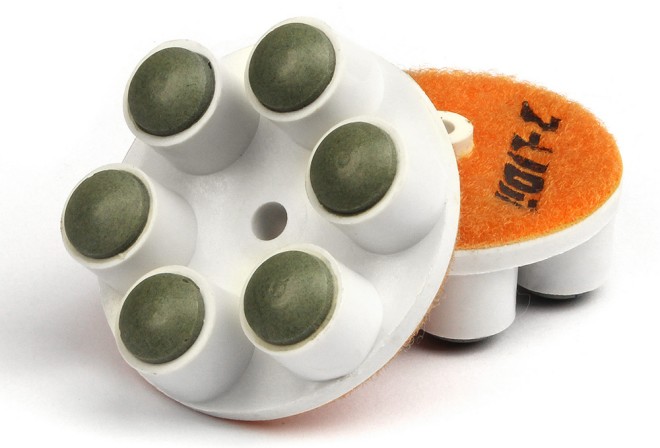
Dry grinding or wet grinding?
Floor grinding is a crucial step in the construction project, and it is also a question that Party A’s customers often confuse: Should we choose dry grinding or wet grinding? The choice of these two methods is not only affected by the construction method and environment but also by the choice of machine equipment and grinding discs. In order to make an informed decision about the correct opening method for floor polishing, it is necessary to analyze the differences between the two methods.
Construction technology
Dry sanding involves the direct grinding of building floors using specialized grinding equipment. Typically, the equipment is large, wide, heavy, and has excellent cutting capabilities. However, its benefits go beyond raw power - the smoothness achieved after grinding is unmatched. This method effectively eliminates defects and irregularities, resulting in a perfectly uniform surface. During the dry grinding process, gravel and dust are inevitably produced. However, the industry has found innovative solutions to effectively manage and eliminate this by-product. One method is to use a vacuum cleaner while grinding the equipment, effectively cleaning away any debris. Alternatively, a dust pusher can be used at the end of the process to push the gravel and dust together for easier cleanup. These advances in equipment and technology help create a cleaner, safer work environment.
Wet grinding, on the other hand, introduces a unique approach to the construction floor grinding process. It requires sprinkling water on the floor before sanding and then using specialized sanding equipment. Adding water serves a variety of purposes, including dust suppression, cooling grinding equipment, and enhancing the grinding process itself. Water acts as a lubricant, reducing friction and increasing the overall efficiency of the grinding process. However, it is crucial to address the issue of wastewater generated during wet grinding. To maintain optimal grinding efficiency, immediate treatment of wastewater is critical. This is achieved through the use of water-absorbing agents, preventing any adverse effects on the grinding process. By treating wastewater promptly, construction professionals can ensure consistent results and minimize any potential disruptions.
environmental impact
Dry grinding, which features the use of specialized equipment to directly sand construction floors, is noted for its efficiency and ability to produce a perfectly uniform surface. However, this method has a drawback - it produces dust and gravel. Without appropriate measures, this may lead to environmental pollution. To combat this problem, workers must wear dust masks to protect their respiratory health. Additionally, neighboring construction sites may be negatively impacted as dust may spread into nearby areas.
Wet grinding involves using specialized equipment to sprinkle water on the floor before sanding it. Water is added for a variety of purposes, including dust suppression, equipment cooling, and enhancing the grinding process itself. The result is a cleaner, safer work environment. However, wet grinding comes with its own set of challenges and complexities. Every step from sprinkler to water collection and wastewater treatment requires careful coordination and advanced infrastructure. The constant need to spray water during grinding can lead to increased water consumption and subsequent strain on resources. Additionally, the wastewater generated during this process requires immediate and appropriate treatment to prevent any potential negative impact on the environment.
In summary, both dry and wet grinding methods have their own advantages and disadvantages when it comes to environmental impact. Dry grinding has the potential to produce dust pollution, which can be mitigated through protective measures and proper cleaning. Wet grinding, on the other hand, provides a cleaner working environment but requires comprehensive water management and wastewater treatment. The choice between these technologies ultimately depends on the specific requirements of the project and available resources. Industry professionals must carefully weigh the environmental impact of each approach and implement strategies to minimize negative impacts. As the construction industry continues to evolve, it is critical to prioritize environmentally friendly practices. Technological advances and ongoing research could pave the way for improved grinding techniques to achieve a better balance between efficiency and environmental considerations. By utilizing these innovative approaches, construction professionals can contribute to sustainable development while maintaining high-quality results.
Grinding disc selection
Dry grinding discs are the first choice for many construction professionals working on floor sanding and renovation projects. Made from diamond and composite materials, these discs provide superior polishing results even without the use of water. This not only saves precious water resources but also makes it widely favored by the industry. The advantages of dry grinding discs are many. By eliminating the need for water, these discs provide a cleaner, drier work environment, reducing the chance of slips and falls caused by wet surfaces. In addition, dry sanding discs offer great convenience and portability for operations in areas with limited or limited access to water. Additionally, dry sanding discs are versatile, making them suitable for a wide range of applications beyond floor sanding and renovation projects. Their efficiency and effectiveness make them a popular choice in a variety of industries, including metalworking, woodworking, and even stone cutting.

On the other hand, wet grinding discs, also known as flexible grinding discs, are specifically designed for floor grinding and polishing. These discs attach to the grinder's adapter, providing a flexible and maneuverable grinding experience. Wet grinding discs are good at removing surface imperfections and achieving a smooth surface on your floor. It is important to note, however, that wet grinding discs require a constant supply of water and proper water management to avoid overconsumption.
The choice of dry and wet grinding discs ultimately depends on specific project requirements and environmental considerations. Dry grinding discs offer water-saving advantages, making them ideal for areas where water is scarce or for projects where water use needs to be minimized. Wet grinding discs, on the other hand, provide excellent surface polishing results and are very effective in achieving a perfectly smooth surface. All in all, choosing the right grinding disc is crucial to ensuring the best results for your construction project. Dry grinding discs have advantages in terms of water saving and environmental protection, while wet grinding discs are excellent at achieving polishing results. By carefully assessing project needs, construction professionals can make informed decisions and drive efficient and effective grinding operations.
Cost consumption
Dry grinding pads generally have a longer lifespan and are more durable than wet grinding pads. This durability translates directly into cost savings since they need to be replaced less frequently. Wet grinding discs, on the other hand, tend to wear out faster due to prolonged exposure to water during grinding. Over time, this can lead to higher consumption and increased costs. Additionally, the presence of water during wet grinding can have an impact on the reaction and performance of the curing agents used in some products. Prolonged exposure to water may affect the curing process and may compromise the overall quality of the finished product. With these factors in mind, dry sanding pads may be a more cost-effective option in terms of longevity and reduced consumption. However, before deciding between dry and wet grinding methods, the specific requirements of the project and the potential impact on the final product must be evaluated.
Polishing effect
Thanks for the additional information. You are correct, wet sanding discs are often able to polish the surface more deeply, which can result in a smoother surface with fewer scratches. The presence of water during grinding helps lubricate and cool the grinding discs, reducing friction and preventing excessive heat build-up. This helps minimize the possibility of scratches and other surface imperfections. In comparison, dry sanding tends to be shallower and produces more dust. This dust may affect the health of the operator and the cleanliness of the surrounding area. Additionally, dry grinding is generally more likely to cause scratches on the machined surface due to the lack of lubrication and cooling provided by water. When it comes to achieving a high-quality polished surface, wet sanding is often preferred as it allows greater control over the finish and reduces the chance of scratches and excessive dust. However, it is important to consider the specific requirements of the project and material being worked on, as some surfaces may require dry grinding or a combination of both methods to achieve the desired result.
All in all, dry grinding and wet grinding each have their own advantages and disadvantages, but due to differences in materials and equipment, customer construction environment requirements, and construction habits, the grinding method that can solve the problem is the best.
-
Online service
-
Official wechat
account
-
QQ:40933769
-
E-mail:
sales@z-lion.com
Online service
Please feel free to give your inquiry in the form below. We will reply you in 24 hours.

